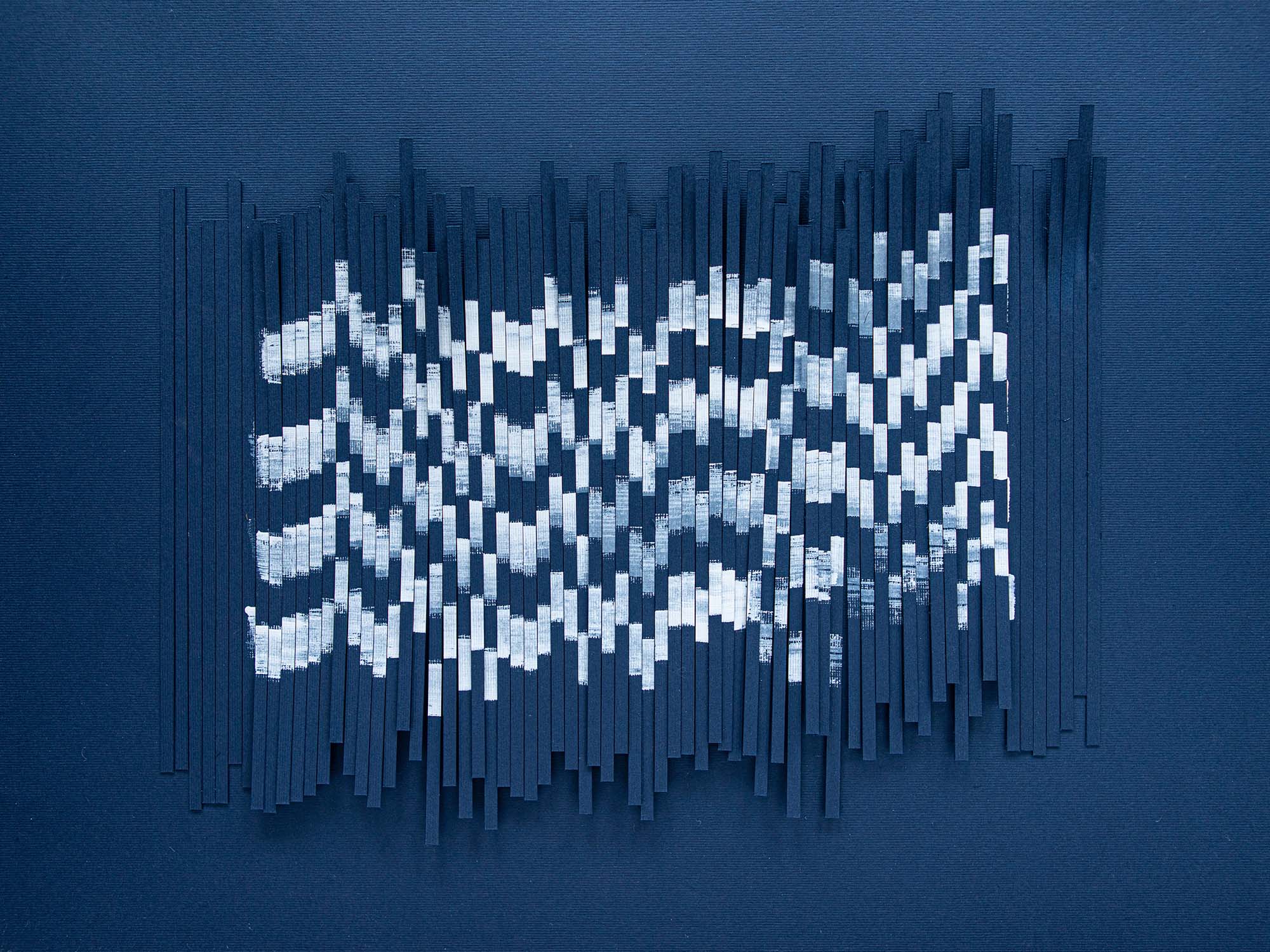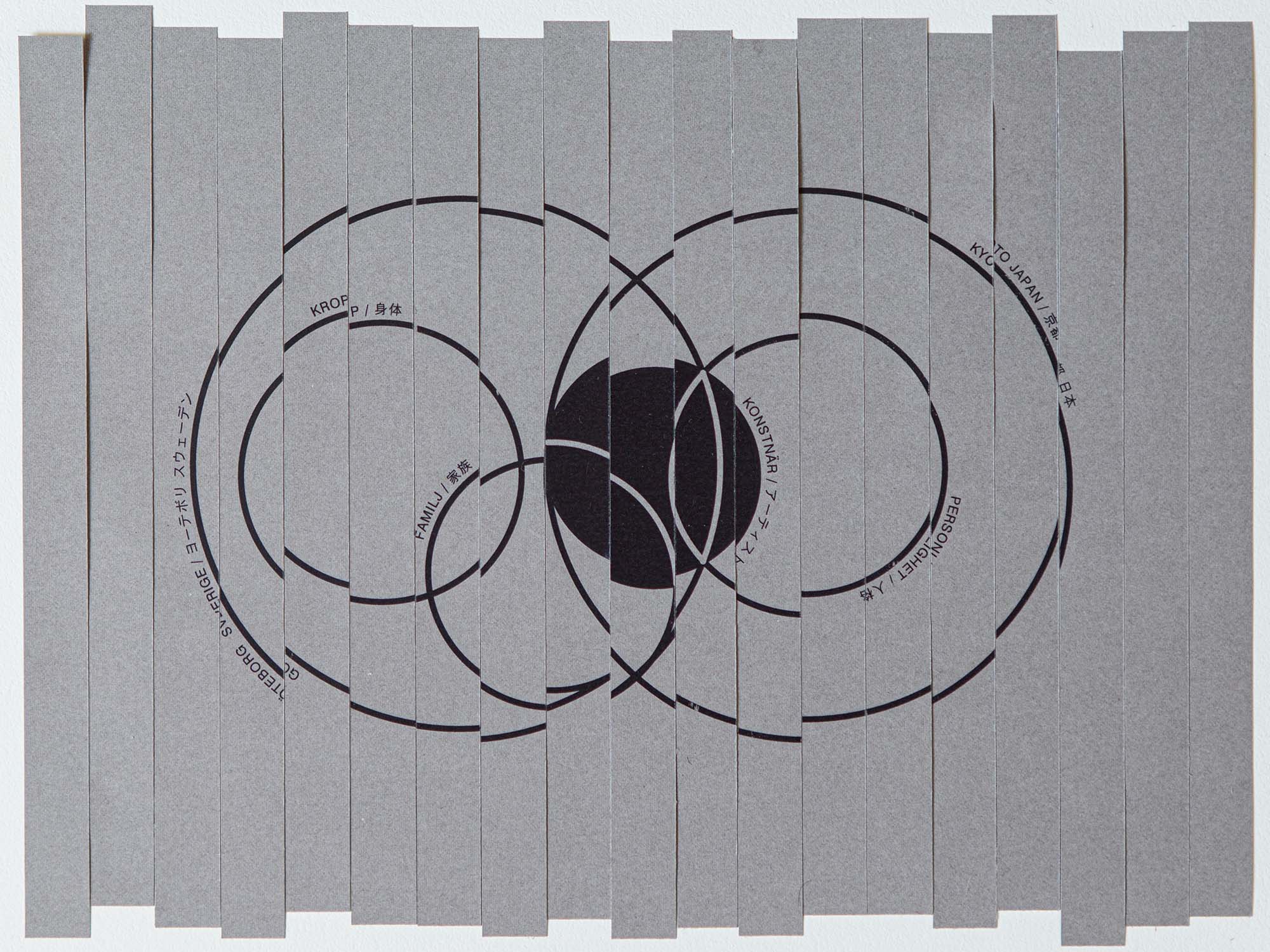Zure
2021
Paper textile weaving (paper, acrylic paint, potato starch)
Dimensions: 185 x 122 cm
Shogo Hirata affirms living between worlds. A skilled textile master who studied both traditional Japanese textile methods and ones local to Sweden, he uses his artistry to weave a vocabulary and a way of translating something from one culture to another. The search for familiarity is a classic exercise when finding belonging in a new context. By weaving paper threads, the process of making textiles is equated to that of writing, of creating signs of communication and leaving written traces of one’s own history. Paper is a medium of narrativity and of safeguarding. What the artist finds impossible to express in words finds its way into the weave – a gesture of defiance and of resilience.
“The title Zure comes from the Japanese word for gap. Having been born and raised in Japan and later moving to Gothenburg, I noticed a difference in the perspective from which I view the city, its people, and its culture. I describe it as living in the gap between two cultures. What I see is different from what others see. The years I spent here haven’t closed this gap. Sometimes I lose track of where I belong.”
(Shogo Hirata)
Biography
Shogo Hirata is a textile artist and graphic designer. Born in 1986 and raised in Kyoto, Japan, he has been living and working in Gothenburg since 2014. In his artistic practice, the inspiration often comes from textile crafts and other analog (hand) techniques. During the process of learning these, he finds ways to use them in different contexts, with different materials, and in combination with other techniques and methods. In other words, he sees the process by which he expresses himself as just as important as the result.
Provocation
Structured around the theme of the city as a machinery of the present time, Comforting the machine synthesised and gave its audience a tight and poignant grasp of truths in the raw. In preparation for the exhibition, the ten artists were also invited to submit something the curators called “Provocations”. The provocation to each artist was a task to expand themselves beyond the walls of the gallery by mapping traces of their work in the region, in history and the future, and to collate them as a string of continuations.
Provocation image
Provocation text
My work becomes/is a reflection of the voice of the local community. The sound of the city/region reverberates through my body, stored in my head together with memories of the past from my home city, country. They all interact in diverse ways and appear throughout my hands. My textile/fiber art is a mixture of two cultures, past and present, where I am now and where I have been.
Since moving to Sweden I have struggled to really connect with the culture. Instead, I feel like I am looking upon the city with different eyes, bringing a different perspective into the local arts and crafts scene in the city/region.
In future years, I might still feel like an outsider. However, I think it is okay to be like no other Swedish or Japanese person and instead stand in-between. I see it as a strength in my art practice.
As I always find it easy to picturise my thoughts instead of verbalising them, this image is my answer to the provocation.


